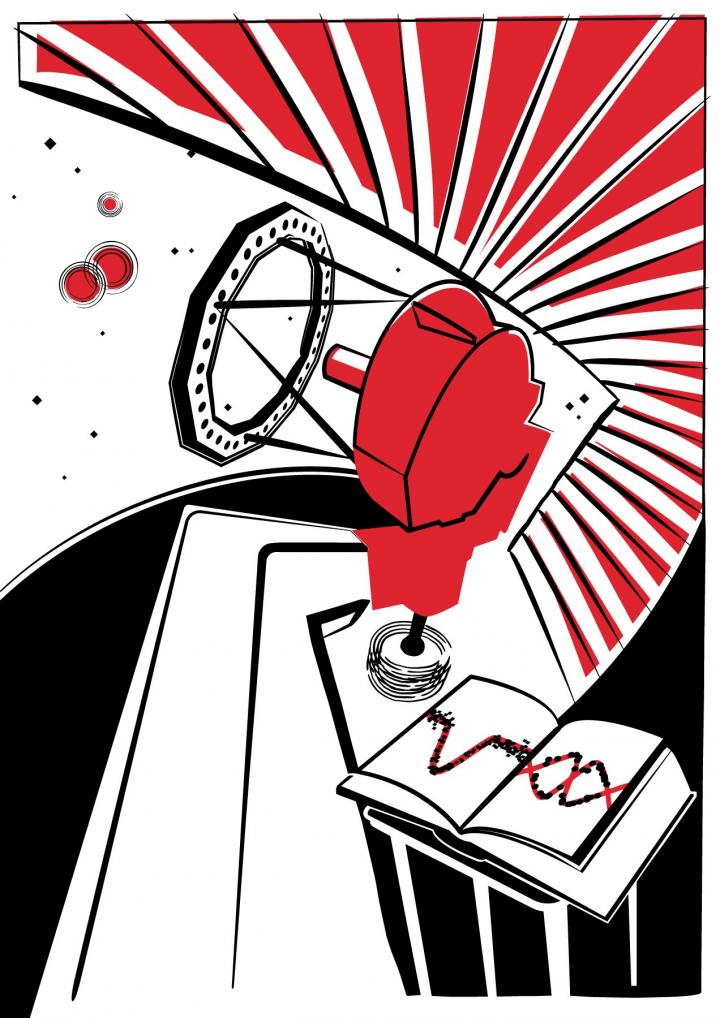
Credit: University of Birmingham / Amanda J. Smith.
The finding was by chance, when the scientists were working on the results from the first light of one of the four telescopes of the project, in Chile. Shortly after the building of the first SECULOOS telescopes, and during the test observations, the team pointed at a well kown brown dwarf 2MASSW J1510478-281817, since renamed 2M1510, in the constellation of Libra. The observations of SPECULOOS picked up an unusual signal which made the researchers suggest that 2M1510 could be two brown dwarfs instead of one, and in orbit around each other.
“Among the first test observations which we made -says Michaël Gillon, an astrophysicist at the University of Liège, and Principal Investigator on the SPECULOOS project-, we pointed our telescopes at a known brown dwarf. But, suddenly, the object appeared to darken for 90 minutes, which indicated that an occultation had just occurred.
The researchers could confirm their hypothesis using two of the most powerful telescopes, one of the two 10m Keck telescopes, in Hawaii, and one of the four 8m telescopes of the Very Large Telescope (VLT) in Chile, the latter being on the same site as the SPECULOOS telescopes which took the initial observations. The Keck and the VLT have sensitive spectrometers which can be used to measure the velocities of celestial objects. The astronomers detected the velocities of both brown dwarfs of 2M1510 while they orbited around each other.
This discovery coincides with the 25th anniversary of the verification of the first brown dwarf, named Teide 1. This was made with the IAC-80 telescope at the Teide Observatory (Tenerife), by a group of IAC astrophysicists led by Rafael Rebolo López, together with María Rosa Zapatero Osorio, and Eduardo Martin Guerrero de Escalante.
“The first observations which led to the new discovery were made in summer of 2017, which shows the observing and data analysis effort needed. With the new Artemis telescope, inaugurated in the Teide Observatory and integrated in the SPECULOOS consortium, we hope to discover soon systems as interesting as this one”, explains Roi Alonso, a memer of the Artemis research team, and an author of the article.
The detection of occulting brown dwarfs is extremely rare: until now only one other system of this type has been identified. These systems give the opportunity to astronomers to measure directly the radii and the masses of the brown dwarfs, which are basic quantities for theoretical models. 2M1510 is also special because it is one of the few brown dwarf systems which have known ages, because it belongs to a nearby group of young stars known as the Argo stellar association.
“Obtaining data on the mass, the radius, and the age is really rare for a star, and even rarer for a brown dwarf”, explains Amaury Triaud, a researcher at the Faculty of Physics and Astronomy at the University of Birmingham and the first author of the article. “Normally we lack one of more of these parameters. As we have all of them, we can verify the theoretical models about how brown dwarfs cool down, models which we have bad for over 30 years. We find that the models fit the observations very well, evidence of human ingenuity”, he adds.
The SPECULOOS project
The mission of the SPECULOOS project (Search for habitable Planets EClipsing ULtra-cOOl Stars) is to investigate planets orbiting ultra-cool dwarfs, which include the smallest stars as well as brown dwarfs. Brown dwarfs (also known as substellar objects) are less massive than stars but more massive than planets. They are too small to produce the fusion of hydrogen to helium in their centres, the process which produces the energy of normal stars such as the sun.
Astronomers predict that ultracool stars and brown dwarfs should have large populations of rocky planets, nearby and potentially habitable, offering many opportunitites to explore a variety of atmospheres and climates. One example is the system of 7 planets, TRAPPIST-1, discovered by members of the same team.
The data which led to this discovery were obtained at the Southern Observatory of SPECULOOS, one of the installations dedicated to the project. SPECULOOS South is in the Paranal Observatory, Chile, operated by the European Southern Observatory (ESO) and funded by the European Research Council (ERC), as well as the Simons foundation, the MERAC foundation and the Science, Technology and Facilities Council. The SPECULOOS project also involves telescopes at the Teide Observatory (Tenerife, Spain), San Pedro Mártir (Mexico), Oukaïmden (Morocco) and the La Silla Observatory (Chile).
The team which made the discovery is made up of researchers from the University of Birmingham; the University of California, San Diego; the University of Liège; the Instituto de Astrofísica de Canarias; the American Museum of Natural History; the University of Cambridge, the University of Berne, Massachussetts Institut of Technology (MIT); the University of Göttingen; and the University of Warwick.
###
Media Contact
Prensa IAC
[email protected]
Original Source
https:/
Related Journal Article
http://dx.




